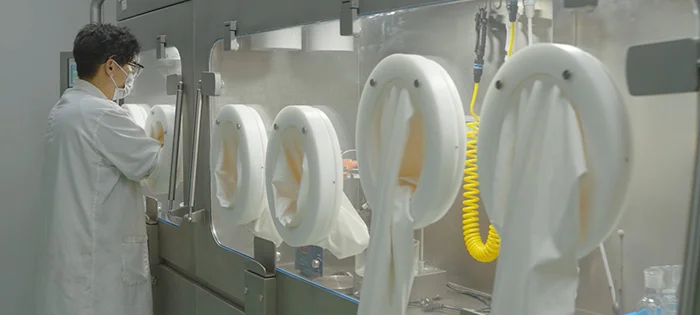 All Categories
All Categories
 Intermediate
Intermediate
 400-780-8018
400-780-8018Antibody-Drug Conjugates (ADCs) are an innovative class of cancer therapeutics, typically composed of monoclonal antibodies, small molecule toxins, and linkers. These drugs combine monoclonal antibodies with highly potent small molecule toxins through chemical linkers, forming a complex therapeutic agent.
In the design of ADCs, ADC linkers play a critical role in determining therapeutic efficacy. They not only ensure the selective delivery and precise release of cytotoxic drugs at tumor sites but also contribute significantly to the stability of the drug during ADC preparation, storage, and systemic circulation.

ADC linkers are divided into two major categories: cleavable and non-cleavable.
There are three main types of cleavable linkers: acid-labile, reducible, and protease-cleavable. For example, disulfide bonds are commonly used as acid-labile linkers. ADCs linked via this method release the drug in a manner that depends on the intracellular concentration of glutathione.
Examples of non-cleavable linkers include thioether linkers (such as those used in T-DM1) and maleimide-based linkers (such as those used in Belantamab mafodotin).
When selecting a linker, there is a need to balance stability and drug release efficiency. Non-cleavable linkers have the advantage of greater stability, while cleavable linkers offer higher release efficiency. In practice, cleavable linkers exhibit varying degrees of stability in circulation and degrade over time in plasma. In contrast, non-cleavable linkers are generally more stable in plasma, but rely on the lysosomal degradation of the entire antibody-linker construct to release their payload. This often results in the retention of charged amino acids on the payload, which may affect the drug’s efficacy or cell permeability.
Selecting the appropriate linker is crucial for preparing antibody-drug conjugates (ADCs) with excellent therapeutic efficacy, low toxicity, and ideal pharmacokinetic properties, while maintaining the antibody's specificity and drug efficacy.
A well-designed linker can improve ADC stability in circulation, optimize pharmacokinetics, and enhance the efficient release of the free drug at the tumor site.
The main purposes of ADC linker design are as follows:
One purpose is to ensure that the cytotoxic payload remains firmly attached to the antibody portion while the drug circulates in the plasma. An unstable linker in plasma may prematurely release the payload, leading to excessive systemic toxicity and reduced payload delivery at the tumor site, where the antigen is bound. This issue is particularly important, as many ADCs carry highly toxic payloads, making systemic administration unsafe.
Another purpose is to ensure the effective release of the payload within the tumor, particularly inside cancer cells. ADCs that fail to properly deliver their payload lose the advantage over naked antibodies and traditional cytotoxic drugs.
ADC linkers play a crucial role in the targeted delivery and release of drugs and are key elements in ADC drug design. Pharmalego provides the building blocks for ADC drug development and has extensive chemical modification capabilities. Our in-house toxins and linkers can meet clients' R&D needs, from milligrams to kilograms. We have built a diverse ADC linker library, including products such as Fmoc-Gly-Gly-Phe-OH, Mc-Val-Ala-PAB, Fmoc-Val-Ala-OH, and 6-(2-(methylsulfonyl)pyrimidin-5-yl)hex-5-ynoic acid. These products fully support ADC drug development efforts.
 Shanghai ICP Record Number 2023026221-1
Shanghai Public Network Security Registration No.31011502400732
Shanghai ICP Record Number 2023026221-1
Shanghai Public Network Security Registration No.31011502400732